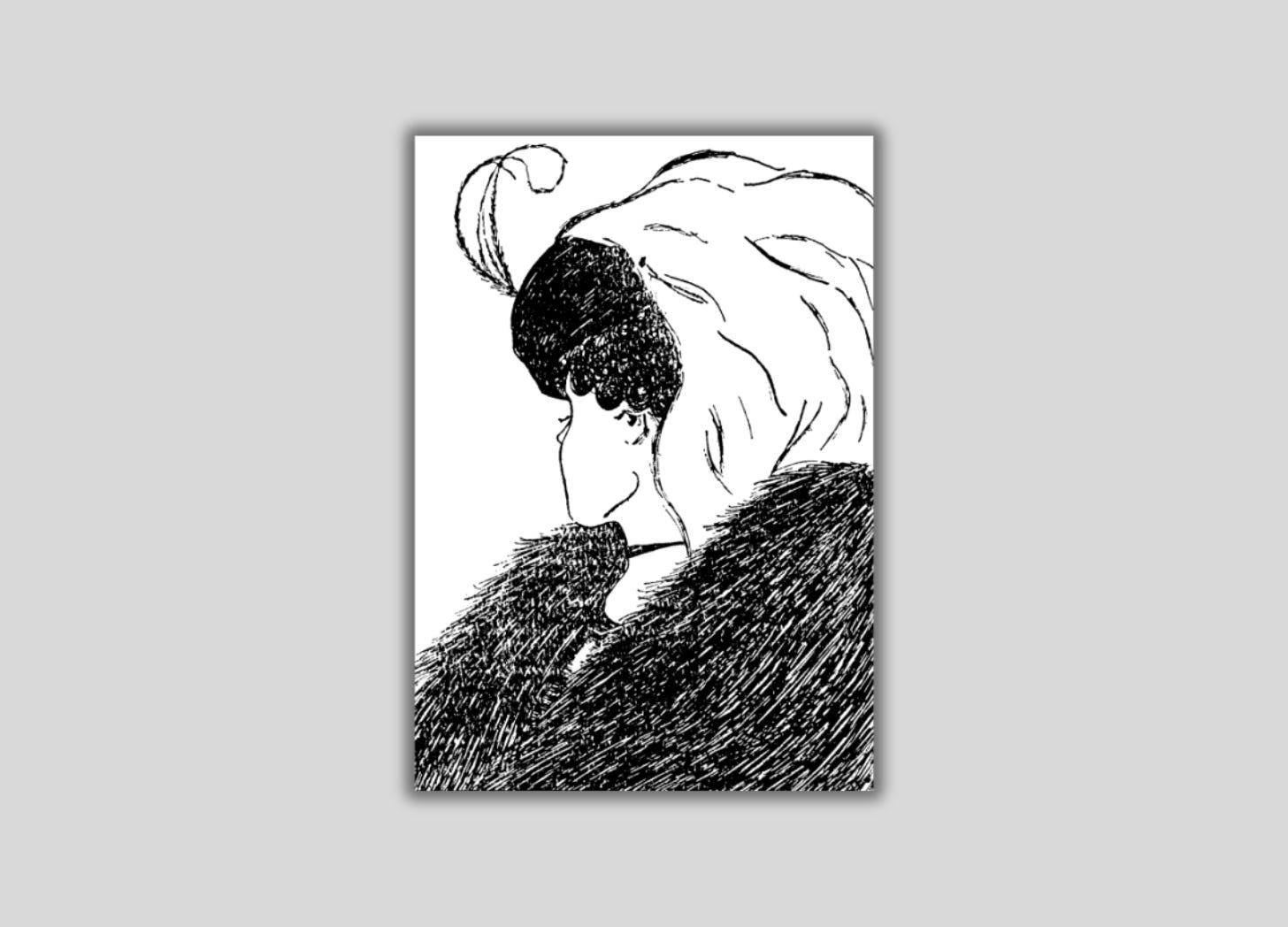The Old Woman Young Woman Illusion is a perceptual phenomenon that has fascinated people for generations. It’s a classic optical illusion that, depending on your perspective, reveals either the image of a young woman or an elderly woman.
The History of the Old Woman Young Woman Illusion
This famous illusion first appeared on a German postcard in 1888. However, its enduring popularity was sparked by British cartoonist William Ely Hill, who adapted the image and published it under the title "My Wife and My Mother-in-Law" in Puck magazine in 1915.
The Old Woman Young Woman illusion remains a topic of interest, discussion, and research, and is frequently introduced in psychology classes to illustrate the science of perception. Its continued legacy owes much to Professor Edwin Boring, who featured the illusion in a short note he wrote for the American Journal of Psychology in 19301, further cementing its place in the study of visual perception. Here’s the text from Boring’s article which accompanied the image of the Old Woman Young Woman illusion:
A New Ambiguous Figure
Puzzle-pictures have long interested psychologists. Gudden's brain-and-babies was published in Jugend in 1896 at the time of the Third International Congress of Psychology at Munich. Titchener based his experiment on attention in his Experimental Psychology (1901) on the then popular puzzle-pictures. Recently Rubin (1915) has given us the goblet profile as one of the more objective of his numerous stimuli illustrating the difference between figure and ground. Many of Kohler's illustrations of sensory organization (Gestalt Psychology, 1929) are really forms of puzzle-pictures. Obviously "attention" and "sensory organization" are simply different names for the same phenomenal fact that such figures illustrate. Probably figure-and-ground must be thought of as a special form of organization, for, in a case like that of the picture accompanying this note, the two alternating figures interpenetrate each other spatially and there is no definite division of the field by a contour, as in Rubin's cases.
The picture presented herewith is not strictly new. It was drawn by the well-known cartoonist, W. E. Hill, and reproduced in the issue of Puck for the week ending November 6, 1915. It is, however, relatively unknown to psychologists, and seems to me to be the best of the puzzle-pictures in the sense that neither figure is favored over the other. In this respect it is the peer of Rubin's goblet-profile, which, however, does not have the two figures interpenetrating in the same region of the total field. The present cut is from a pen-and-ink copy of Hill's published half-tone. I am indebted to Mrs. W. H. Hunt for the copy, which is, if anything, a little better for the psychologist's use than the original.
This picture was originally published under the title "My Wife and My Mother-in-law." It shows in one figure the left profile of a young woman, three quarters from behind. The other figure is an old woman, three-quarters from in front. The ear of the 'wife' is the left eye of the 'mother-in-law;' the left eye-lash of the former is the right eye-lash of the latter; the jaw of the former is the nose of the latter; the neck-ribbon of the former, the mouth of the latter.
The Science of the Old Woman Young Woman Illusion
Optical illusions manipulate our brain's perception of depth, size, and distance. They work by taking advantage of the brain’s natural tendency to fill in gaps and complete patterns, leading to ambiguous interpretations of the visual information it receives.
These illusions are also influenced by "top-down processing," where the brain relies on prior knowledge and expectations to interpret sensory input. In the case of the Old Woman Young Woman illusion, the brain uses prior understanding of aging and facial features to determine the age of the face, resulting in conflicting perceptions.
A 2018 research study conducted at Flinders University explored this illusion and found that perception of the young or elderly woman in the image was influenced by the age of the viewer. Participants aged 18 to 30 were more likely to initially see the young woman, while those over 30 tended to first perceive the older woman. The study concluded that own-age bias significantly impacts the subconscious perception of faces.
Top-down processing refers to the constructive nature of perception. Namely, that our perception of things is influenced by what we already know. Check out this brilliant demonstration of auditory top-down processing by Professor Chris French, which explains why some people believe that they can hear Satanic messages in Rock music!
The Importance of the Old Woman Young Woman Illusion
The Old Woman Young Woman illusion is significant for several reasons. First, it demonstrates the power of perception and how our individual experiences and beliefs shape the way we see the world around us. Second, it offers insight into the intricate workings of human cognition, revealing how our brains process and interpret information. Third, it serves as a fascinating example of how external factors, such as context and perspective, can influence our perceptions. Beyond its academic value, the illusion is also an engaging and enjoyable way to explore complex ideas and concepts in a fun, accessible manner.
Want to learn more about psychology of optical illusions and see some brilliant optical illusion examples? I have a page dedicated to the subject on my psychology website, which you can access via the following link.
Stay in the know! The All About Psychology newsletter is your go-to source for all things psychology. Subscribe today and instantly receive my bestselling Psychology Student Guide right in your inbox.
Upgrade to a paid subscription and also get the eBook version of my latest book Psychology Q & A: Great Answers to Fascinating Psychology Questions, as well as regular psychology book giveaways and other exclusive benefits.
Boring, E. G. (1930). A New Ambiguous Figure. The American Journal of Psychology, 42(3), 444.





